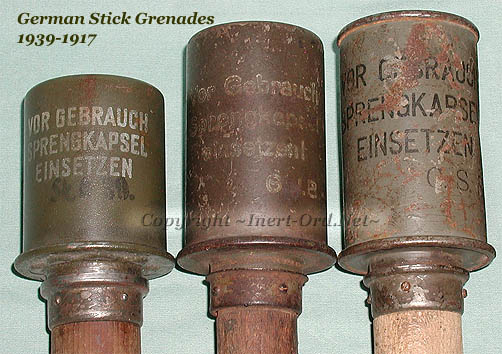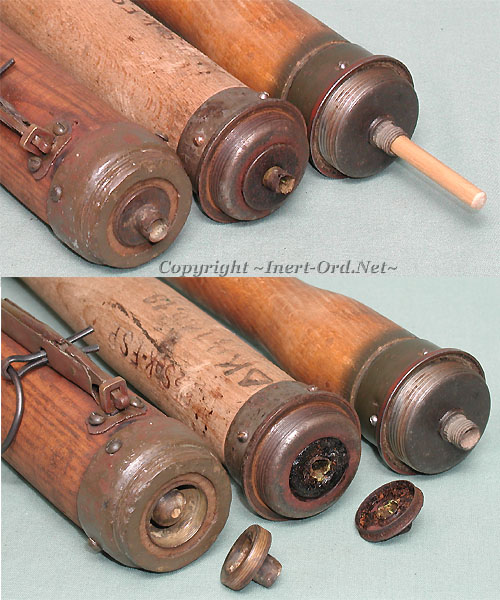
Vor Gebrauch Sprengkapsel Einsetzen "BEFORE USING, INSERT A DETONATOR"
To insert a detonator the head is unscrewed and the tube shaped detonator inserted in a socket at the top of the stick, then the head is screwed back in place.
The paper label was soon replaced by a painted stencil, shown on these examples. Note the different color schemes.

The Model 1915 fuze holder consists of a machined disc with a sheet metal tube assembled to it. Note the allways fuze inside.
The 1917 design is simpler, with a formed sheet metal assembly held in place by some sort of hardened resin.
(Anyone have a detailed diagram of how exactly the WWI era fuze was mounted inside?)
By WWII the design was modified to a single fabricated steel fitting, where the fuze was screwed directly in place.
Below are the remains of two expended fuzes, showing the pull cords and friction wires. Pulling the cord drew the wires through a match compound which ignited the time delay.
I'm not sure what the purpose the white porcelain beads served. One possibility was to pull the wood stopper from the base of the fuze tube, thereby opening an air channel for the burning fuze.
The stopper would also help act as a moisture seal, protecting the fuze from water damage.
